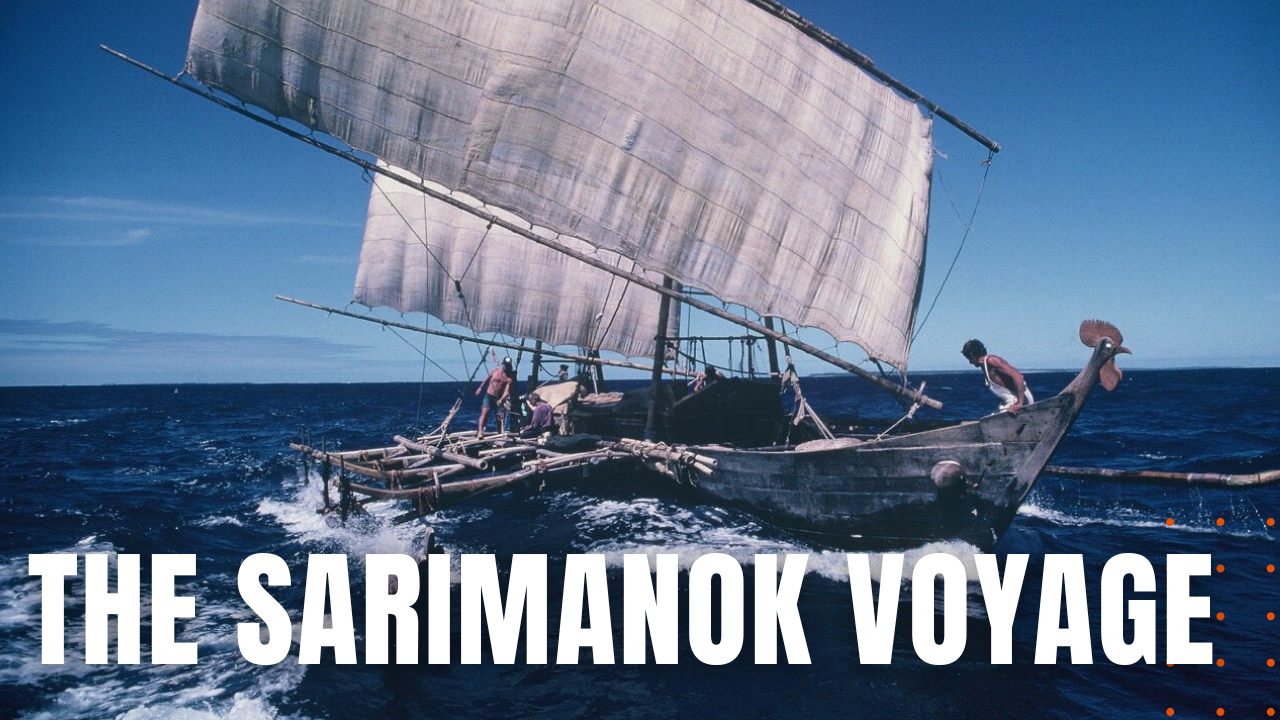Voyage of the Sarimanok

In the mid-1980s, writer and sailor Bob Hobman and artist Chico Hansen traveled to the Southern Philippines to study ancient boatbuilding techniques gleaned from 3rd to 7th century archaeological findings from both Malaysia and the Philippines. Their ultimate goal was to build a vessel that could prove that the ancestors of Madagascar, who originally came from Indonesia 2,500 years ago, did so not in short coastal stages—as scholars maintained—but rather in epic voyages that sailed directly across the open waters of the Indian Ocean. Assisted by Filipino shipwrights on the island of Tawi-Tawi, the two men built their 60-foot vessel the Sarimanok, named after a mythical bird in Maranao folklore, symbolizing good fortune, yet on their shakedown cruise to Bali with two other crew members, Chico lapsed into a hepatitis-induced coma, passing away before Hobman could reach landfall for medical assistance.
A Second Try
A year later, Hobman would try again with a crew of seven men and one woman—all experienced sailors—where nutritionist Sally Crook stowed and cooked the foods of their ancestors—primarily rice, pickled vegetables, soybeans, vinegar and spices. Departing Indonesia in 1986, in a vessel that could barely tack across the wind or sail to windward, navigator Bill McGrath employed ancient navigation techniques such as celestial, dead reckoning, deep water phosphorescence, wind and current drift, checked periodically and in secret by other crew members who kept a sextant aboard as verification of McGrath’s accuracy. During their 4,000-miles voyage, the crew faced numerous challenges, including treacherous weather conditions, exposure and logistical hurdles, not to mention dogged anxieties about losing a man overboard or being run down by a freighter, since wooden vessels fail to show up on radar.
Another Illness
Sarimanok’s luck turned ever more dangerous when crew member Colin Putt fell ill with either malaria or hepatitis. Not wanting to risk another fatality, the Sarimanok made landfall at the Cocos Islands, a series of low-lying coral atolls some 1500 miles west of Bali. Once Putt was delivered ashore for medical attention, the Sarimanok continued her westward voyage, battling high seas, wet food supplies and mounting fears that the Sarimanok would break apart before reaching landfall. Their fears would be realized some 600 miles east of Madagascar, when Sarimanok’s starboard outrigger broke away, followed by a dangerous separation of their rudder post. Working each problem as a team, the experienced crew of seven successfully made landfall in Madagascar, 65 days after leaving Indonesia, making the voyage of the Sarimanok, a bold affirmation of the maritime capabilities of ancient man.
